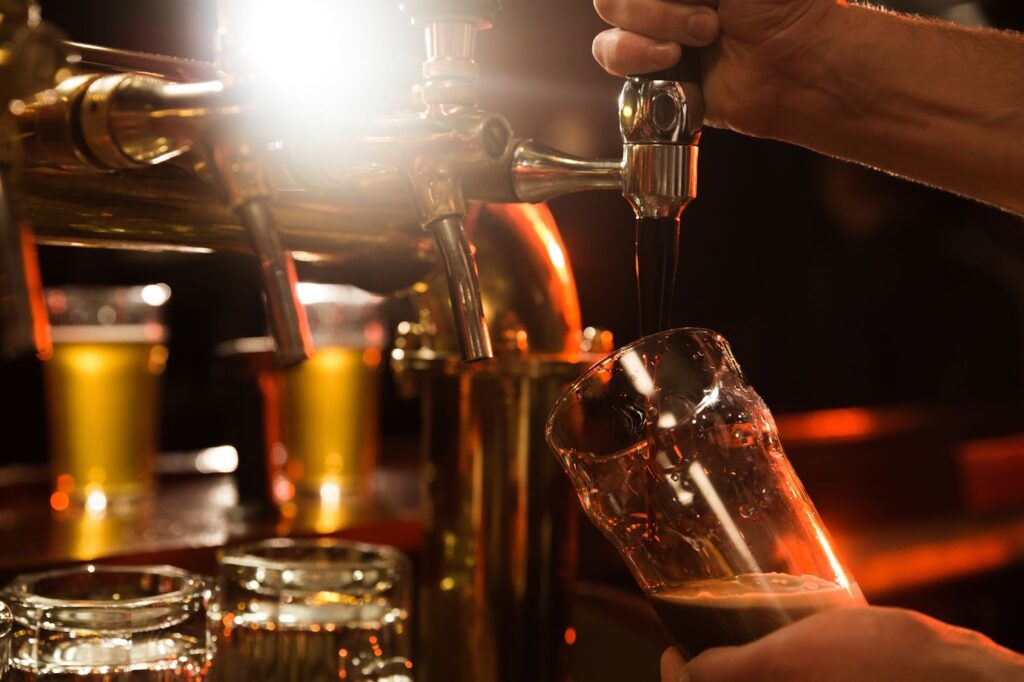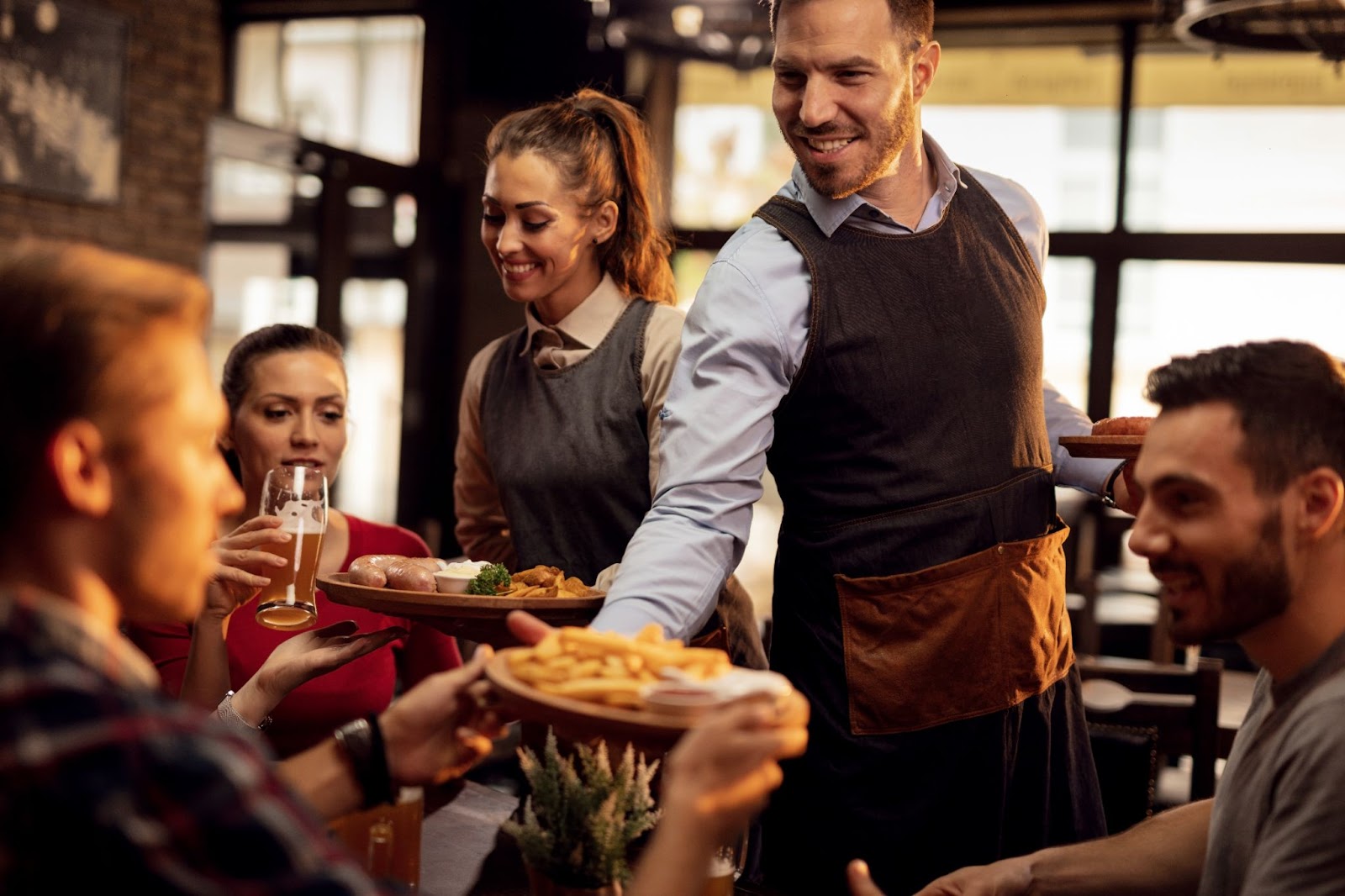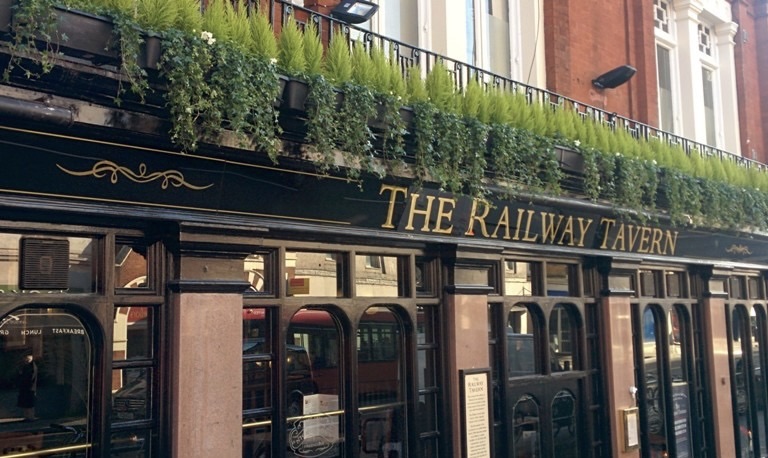A pub embodies the quintessential ambiance of a classic British tavern, resonating with the echoes of tradition. Within its inviting confines, patrons are often treated to hearty, substantial meals. In contrast, a bar exudes a distinctly American flair. Bars tend to focus on a simpler fare, frequently featuring finger foods as their culinary offerings.
Within the welcoming walls of a pub, one can expect to find an extensive selection of libations, including a diverse array of beers and the delightful tang of hard ciders. On the flip side, bars may limit their gastronomic offerings, opting for a more streamlined approach, while still extending a variety of beverages.
Although both establishments may proffer a similar roster of drinks, it’s not uncommon for certain bars to specialize in particular types of libations, crafting a unique niche for connoisseurs of specific beverages.
Understanding the World of Pubs
Pubs, otherwise known as “Public Houses”, are establishments primarily focused on providing a wide range of alcoholic beverages to patrons. Their origins trace back to the United Kingdom, Ireland, and Anglophone countries, with historical roots tying them to the local community’s social life. A characterizing feature of pubs is their ambiance, typically invoking a cozy, friendly atmosphere where individuals can enjoy a chat over drinks.
While pubs do serve food, their primary focus remains on their beverage offerings, which often include:
- Variety of beers, often including locally brewed ones;
- Wide selection of wines;
- Spirits and cocktails;
- Non-alcoholic options.
Additionally, pubs often host theme nights, live music, and pub quizzes creating a vibrant, lively atmosphere.
The Traditional Appeal of Taverns
Contrary to the pub’s focus on alcoholic beverages, taverns originated as places for travelers to rest and have a hearty meal. It’s common to find a tavern in historical or fantasy settings, highlighting their deep roots in society. Unlike pubs, taverns welcome all age groups as their main offer is food over drink.
A typical tavern might offer:
- A comprehensive food menu, often focused on traditional or comfort food;
- A selection of alcoholic and non-alcoholic beverages;
- A welcoming and family-friendly atmosphere.
Taverns may also have historical significance, adding a unique charm and interest for visitors. It’s worth noting that licensing rules vary between pubs and taverns due to their different focuses on food and alcohol.
When deciding between a pub or a tavern, consider the group’s preferences, the ambiance sought, and the significance of food versus drink. Understand these key differences to make the perfect choice for a night out!
Delving into Pubs: Your Go-To for Drinks and More
Traditionally, pubs are known as establishments where patrons primarily go to enjoy a variety of alcoholic beverages. They offer a range of drinks to suit different tastes, including beers, wines, and spirits. Some even specialize in craft or local brews that offer unique flavors and experiences. Beyond just serving drinks, pubs often provide additional entertainment options such as live music, trivia nights, and sports broadcasts.
Key aspects of pubs include:
- A broad selection of alcoholic drinks, typically including beer, wine, and spirits;
- An emphasis on creating a friendly, comfortable ambiance;
- Entertainment options, from live music to trivia nights and sports broadcasts;
- A simple food menu complementing the drink selection.
Keep in mind that while some pubs do serve food, the primary aspect remains their alcoholic offerings. It’s the place to visit when you want to unwind with friends over a pint or two!
Taverns – A Blend of History, Meals, and More
Historically, taverns were establishments that served as rest and refueling stops for travelers, offering hearty meals and a comfortable ambiance. Today, they continue this tradition, with a focus on serving food but also offering alcoholic and non-alcoholic beverages.
Key features of taverns include:
- A comprehensive food menu, often including traditional or comfort meals;
- A selection of drinks, with less emphasis on alcoholic beverages compared to pubs;
- A welcoming atmosphere often open to all age groups, including families;
- A rich history, with many taverns housed in historic buildings or locales.
Taverns often hold a rich historical significance, adding to their overall charm. Patrons can enjoy a delicious meal while soaking in the lore of these establishments. They are an excellent choice for those seeking a place to enjoy a meal, whether alone, with family, or friends.
It’s important to remember that licensing regulations for these establishments vary depending on the focus on food versus alcohol service. As a patron, it’s advisable to be aware of these nuances when deciding between a pub and a tavern.
The Intricacies of Bars: More Than Just a Drink Destination
Bars are often seen as casual meeting places, predominantly featuring a selection of alcoholic beverages. They stand as iconic institutions in many cultures, known for their distinct atmosphere and offerings. Despite the common tendency to use “bar,” “pub,” and “tavern” interchangeably, region-specific distinctions exist, defining the nature of these establishments.
In essence, a bar can be seen as a more modern and arguably informal version of a pub or a tavern. The primary focus of a bar is to serve a diverse range of alcoholic drinks – from beers and wines to elaborate cocktails. Some bars further distinguish themselves by specializing in a specific type of drink, such as craft beers or whiskey.
Distinct characteristics of bars include:
- An extensive menu of alcoholic beverages, often with a specialization;
- A lively, informal ambiance often catering to a younger demographic;
- Light food options, including snacks or ‘finger foods’;
- Entertainment options, from live DJ sets to dance floors.
In many regions, such as the United Kingdom, the term “bar” implies a lighter food offering compared to a pub. Here, pubs typically provide more substantial meals, while bars often limit their menu to snacks or appetizers that accompany the drinks.
However, these definitions can vary globally, with some countries displaying more pronounced differences than others. As we dive deeper into defining pubs, bars, and taverns, it’s essential to understand these regional nuances that shape our social drinking experiences.
Remember, whether you’re casually exploring the local nightlife or planning an evening with friends, the choice between a pub, tavern, or bar ultimately depends on your preference for ambiance, drink selection, and food offerings.
Brewpubs: A Unique Fusion of Brewery and Pub
A brewpub stands as a unique blend of a brewery and a pub or restaurant, offering patrons an immersive beer-drinking experience. In essence, a brewpub is an establishment that serves beer directly from the on-site brewery tanks, adding an authentic flavor to the overall visit.
The presence of large fermentation tanks within sight of patrons not only lends credibility to the brewpub but also showcases the artistry and meticulous brewing process behind each pint. This transparency allows brewpubs to captivate their customers, offering them a glimpse into the intricate science of brewing.
Key features that characterize a brewpub include:
- On-site brewing facilities, allowing beer to be served directly from the brewery tanks;
- The opportunity for patrons to observe the brewing process, lending authenticity to the brewpub;
- A food menu designed to complement the beer offerings;
- The availability of “to-go” services, enabling patrons to take their favorite brews home.
In addition to the unique on-site experience, many brewpubs extend their reach by distributing their brews to various external locations such as local liquor stores or other restaurants. This extends the brewpub’s influence and allows a wider audience to taste their carefully crafted beers.
Indeed, visiting a brewpub is an experience like no other for beer enthusiasts. It’s a chance to enjoy fresh and often unique brews, witness firsthand the brewing process, and dive into the vibrant culture of craft beer. If you’re a beer aficionado seeking an authentic, immersive experience, a visit to a local brewpub is a must!
Pubs: The Heart of Social Drinking Culture
In many parts of the world, especially in English-speaking countries, pubs are associated with a warm, welcoming atmosphere, where people gather to enjoy a variety of alcoholic drinks. They’re often seen as the heart of a community, a place where locals and tourists alike can relax, socialize, and even participate in local traditions such as live music and trivia nights.
Pubs typically offer a broad range of alcoholic beverages, with a heavy focus on beers, wines, and spirits. Some pubs also serve food, although this is typically secondary to their drink offerings. In essence, pubs are primarily about the drinks and the social atmosphere they cultivate.

Key aspects of a pub include:
- A wide selection of alcoholic beverages, with an emphasis on beer and wine;
- A cozy, welcoming environment, often with traditional decor;
- Regular entertainment, such as live music, quiz nights, and sports broadcasts;
- A simple food menu, often including traditional pub fare.
Taverns: A Blend of History, Food, and Drinks
Taverns, while similar to pubs, have some distinct characteristics. They originated as places for travelers to rest and get a meal, often providing lodging. Over time, taverns also became popular gathering spots for locals to enjoy food and drinks, discuss local events, politics, or personal matters. Also, step into the enchanting world of Trivoli Tavern – where history meets hospitality, and every visit becomes a timeless memory. Explore the secrets within!
The primary focus in a tavern is the food, with a broad menu offering everything from snacks to full meals. They do serve alcoholic beverages, but this is usually secondary to their food offerings. The ambiance in a tavern is typically more family-friendly compared to a pub.
Key features of a tavern include:
- A comprehensive food menu, often including traditional or local cuisine;
- A selection of alcoholic and non-alcoholic beverages;
- A welcoming atmosphere, often with a family-friendly vibe;
- Interesting historical backgrounds, with many operating in historically significant buildings.
It’s crucial to note that while the terms “pub” and “tavern” are often used interchangeably, they denote slightly different types of establishments. It ultimately boils down to the individual’s preferences, whether they’re seeking a place focused more on drinks (pub), or a place where food takes center stage (tavern).
The Evolution of Pubs and Taverns: From Drinking Spots to Storefronts
Historically, pubs and taverns served as focal points of community life, offering a place to socialize, eat, and drink. However, with changing societal norms and economic factors, some of these establishments have been repurposed for a variety of uses.
One such example is in London, where a number of former pubs have been reimagined as shops, cafes, or residential buildings. A notable case is the African Queen pub, known as Bogarts. Once a popular destination with patrons like songwriter Max Bygraves, the pub ceased operations in 2002. Today, it stands as a testament to the transformation and repurposing seen among many older pubs and taverns.
Key Points:
- Pubs and taverns have a rich history, once acting as hubs of social interaction and community life;
- Economic changes and shifts in societal norms have seen some of these establishments transformed into different entities;
- The African Queen pub, Bogarts, is a prominent example of this metamorphosis.
Pubs vs Taverns: A Comparative Analysis
A pub, originating from the term ‘public house’, is a British establishment that primarily serves alcoholic beverages, often accompanied by a food menu. Known for their relaxed, friendly environment, pubs have a homely feel, making them a popular choice for families and friend gatherings. They often feature traditional decor and regularly host communal activities such as trivia nights and live music.
On the other hand, bars are typically more formal and widespread globally. While they also serve alcohol, bars usually offer a diverse menu, often including cocktails and a wide range of international spirits. Due to their more formal ambiance, bars might not be the best choice for family gatherings.
Key Differences include:
- Pubs present a casual, homely setting, providing a cozy place for socializing over drinks and food;
- Bars tend to have a more formal atmosphere, appealing to patrons looking for a sophisticated night out;
- While both pubs and bars serve alcoholic beverages, pubs often lean towards traditional brews, while bars offer a broader range.
Whether pub or bar, each establishment has its unique appeal. Understanding the nuances that distinguish them can help patrons make an informed decision, enabling them to enjoy a bespoke drinking and dining experience.
Conclusion
In conclusion, the distinction between pubs and bars transcends mere geography, encompassing cultural nuances in their offerings and atmospheres. Whether seeking the hearty charm of a British pub with its substantial meals and diverse drink selection or the American vibrancy of a bar with its focus on simplicity and finger foods, patrons have a delightful array of choices. Furthermore, the intriguing diversity within these establishments, with some bars specializing in niche beverages, enriches the experience for all who seek to savor the unique character of each.



